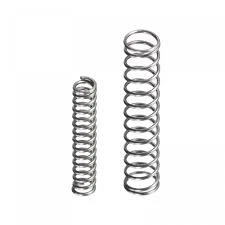
- Mobile Phone
- +8613931874955
- sales@cntcmetal.com
Stainless Steel Wall Ties for 150mm Cavity Applications and Benefits
Stainless Steel Wall Ties for 150mm Cavity A Comprehensive Guide
In modern construction, the integrity and durability of buildings are paramount. One of the crucial components in this regard is the use of wall ties, particularly in cavity wall systems. Among the various options available, stainless steel wall ties have gained prominence due to their corrosion resistance, strength, and longevity. This article delves into the specifics of stainless steel wall ties designed for 150mm cavities, exploring their importance, types, installation practices, and advantages.
Importance of Wall Ties
Wall ties are essential in connecting two separate leaves of a cavity wall, providing structural stability and strength. They ensure that the two walls act as a single unit, resisting lateral forces such as wind loads. In a 150mm cavity wall, the choice of wall tie is critical, as it must accommodate the width while ensuring adequate support.
Types of Stainless Steel Wall Ties
Stainless steel wall ties come in various designs, each suited for different applications. The standard types suitable for 150mm cavities include
1. Horizontal Wall Ties These are installed to connect the inner and outer walls horizontally. They prevent the walls from separating due to wind or other lateral forces.
2. Vertical Wall Ties These ties provide additional vertical support and help distribute loads more evenly across the wall structure.
3. Cavity Wall Ties Specifically designed for cavity walls, these ties are typically a little longer to cater to the 150mm cavity, ensuring they provide necessary anchoring.
Among various grades of stainless steel, Grade 304 and Grade 316 are commonly used for wall ties. Grade 316 is particularly noted for its enhanced corrosion resistance, making it ideal for use in coastal or high-humidity environments.
Installation Practices
Proper installation of stainless steel wall ties is vital for ensuring their effectiveness
. Here are some guidelines to follow when installing ties in a 150mm cavitystainless steel wall ties for 150mm cavity

1. Positioning Wall ties should be installed at regular intervals, typically every 600mm vertically and 900mm horizontally. This spacing can vary depending on building regulations and specific structural needs.
2. Embedment The ties should be embedded thoroughly into the mortar joint of both the inner and outer leaf. This usually requires a minimum embedment depth of 50mm in the masonry.
3. Orientation Ensure that the ties are positioned at a downward angle (typically 15 to 30 degrees) towards the outer leaf. This orientation prevents water ingress into the cavity.
4. Compatibility Ensure that the wall ties are compatible with the materials used in the wall structure. They should be aligned with the masonry to prevent excessive stress on the ties.
Advantages of Using Stainless Steel
Stainless steel wall ties offer numerous benefits, particularly in a cavity wall system
1. Corrosion Resistance One of the most significant advantages is their resistance to corrosion. This property makes stainless steel ties an excellent choice for buildings exposed to aggressive environmental conditions, such as coastal areas and humid climates.
2. Strength Stainless steel has high tensile strength, providing robust support for the walls, enhancing overall structural stability.
3. Durability With a long lifespan, stainless steel wall ties require minimal maintenance, making them a cost-effective option in the long term.
4. Safety Their high corrosion resistance minimizes the risk of failure, contributing to the overall safety of the structure.
In conclusion, stainless steel wall ties designed for 150mm cavities are crucial elements in modern building construction. They not only offer significant structural support but also enhance the longevity and safety of cavity wall systems. When choosing and installing wall ties, builders must adhere to best practices to ensure optimal performance and durability. With the right materials and techniques, the integrity of buildings can be effectively maintained for decades to come.
share:
-
Creative Ways to Decorate Your Tomato CageNewsAug.22,2025
-
Common Mistakes When Installing Brick Wall TiesNewsAug.22,2025
-
Customizing Conical Springs for Aerospace ApplicationsNewsAug.22,2025
-
Galvanized Tie Wire for Binding PipesNewsAug.22,2025
-
Environmental Impact of Using Snake Spacers in PlumbingNewsAug.22,2025
-
Sacrificial Formwork Systems for Complex StructuresNewsAug.22,2025
-
Wall Ties for Concrete: Invisible Guardians of Building Structural StabilityNewsAug.08,2025
